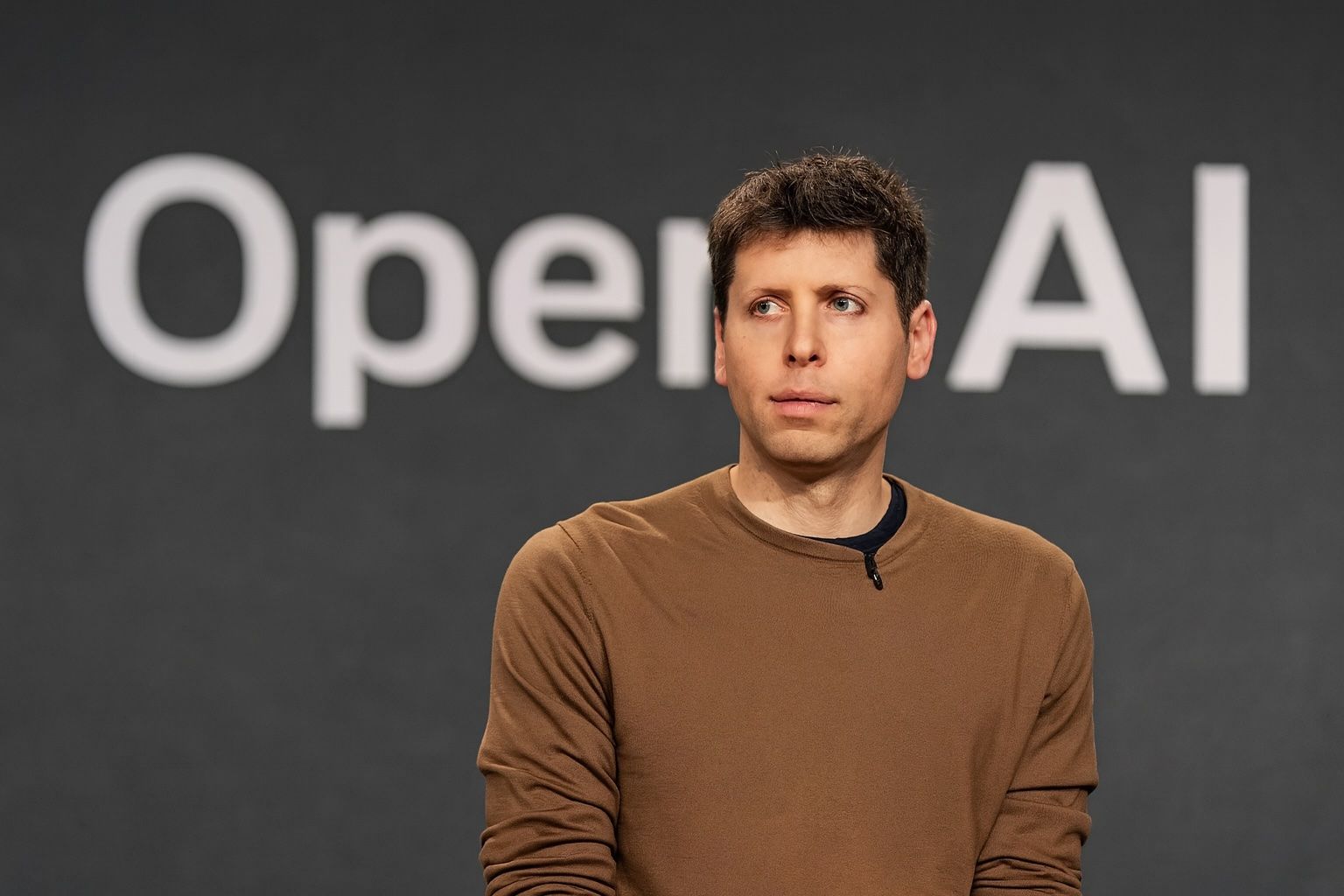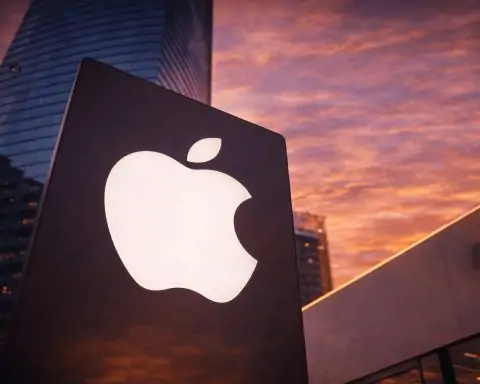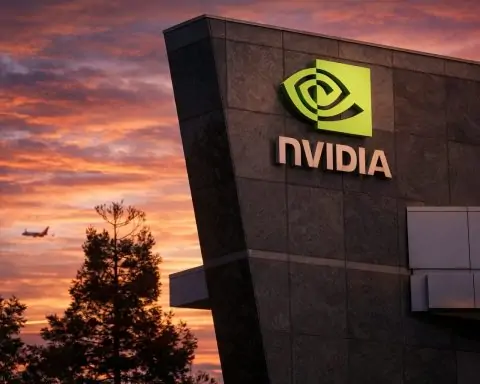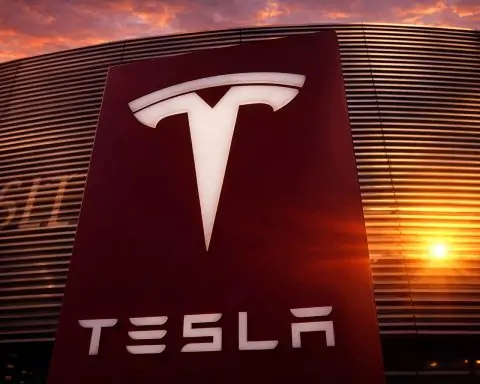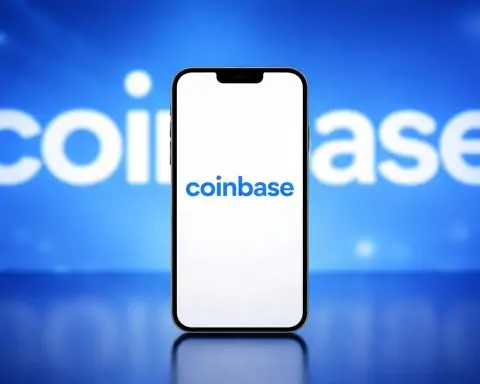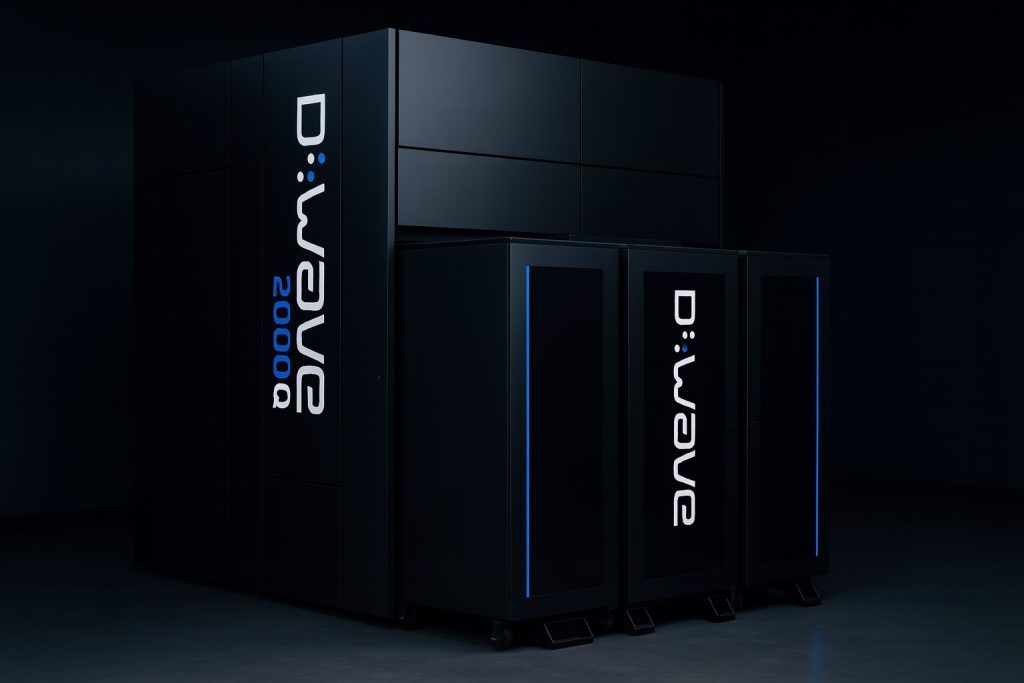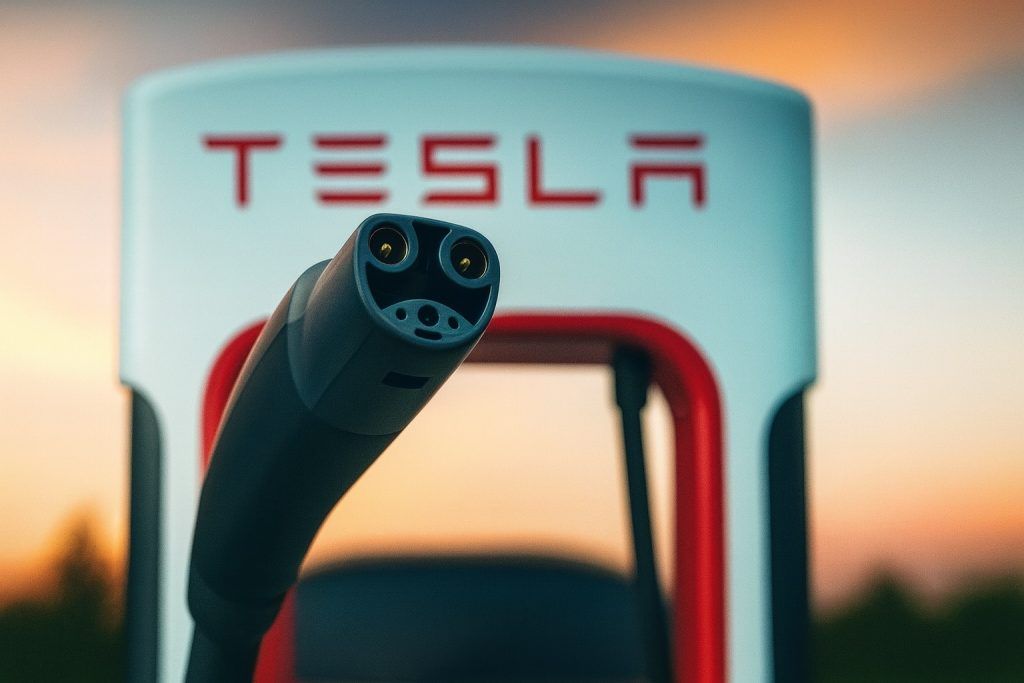- AgentKit Launch: OpenAI CEO Sam Altman announced “AgentKit,” a no-code toolkit for building and deploying AI agents, at OpenAI’s DevDay 2025 [1]. It lets developers visually design multi-step agent workflows and ship them faster with less friction [2]. AgentKit’s components include Agent Builder (a drag-and-drop canvas for logic), Connector Registry (to manage data/tool integrations), and ChatKit (an embeddable chat UI) [3]. Altman likened Agent Builder to “Canva for building agents” [4], underscoring its ease of use.
- ChatGPT as a Platform: OpenAI also unveiled an Apps SDK that turns ChatGPT into an app platform, allowing developers to build third-party apps inside ChatGPT’s interface [5]. Users can now invoke apps by name in conversation (e.g. “Figma, turn this sketch into a diagram”), handing tasks off to integrated services [6]. This effectively creates an “App Store” within ChatGPT [7], with formal app submissions and an app directory launching later this year [8]. OpenAI plans to enable monetization via an “Agentic Commerce Protocol” for instant in-chat purchases [9].
- 800M Users & 6B TPM: ChatGPT’s user base has exploded – over 800 million people use ChatGPT every week, Altman revealed [10]. The OpenAI platform now serves 4+ million developers and handles a staggering 6 billion tokens per minute via its API [11]. This meteoric growth helped drive OpenAI’s valuation to $500 billion in a recent share sale to investors including SoftBank [12]. However, heavy R&D spending means the company still runs at a loss (reportedly $13.5B net loss in H1 2025), fueling the push to attract more developers and enterprise uses.
- Sora & Consumer AI: In the weeks leading up to DevDay, OpenAI rolled out Sora 2, a next-gen text-to-video model, along with an invite-only Sora mobile app [13]. Sora lets users turn text prompts or images into 10-second hyper-realistic videos with sound [14]. It even allows “Cameos” – inserting a user’s own AI-rendered likeness into videos with permission [15]. This consumer launch, alongside other news (like a $6 gigawatt AI chip deal with AMD [16]), set the stage for DevDay’s focus on developers and platform-building.
- GPT-5 and New Tools: OpenAI’s latest model GPT-5 had launched in August 2025, becoming the default ChatGPT engine and hailed by Altman as “clearly generally intelligent” and a “PhD-level” AI [17]. At DevDay, OpenAI announced a new GPT-5 Pro API for developers and a lightweight real-time voice model (“gpt-realtime-mini”) [18]. They also made their Codex code model generally available [19]. These enhancements, together with AgentKit and ChatGPT apps, aim to entrench OpenAI’s platform as the hub of AI development.
- Jony Ive’s AI Hardware Tease: DevDay featured a rare discussion with Jony Ive (Apple’s famed ex-designer), who is helping OpenAI design a “family of AI devices.” Altman and Ive confirmed they are prototyping multiple AI hardware products – exploring “15 to 20 really compelling” device ideas that go beyond the smartphone form-factor [20] [21]. Ive hinted these gadgets won’t just boost productivity; they should “make us happy, and fulfilled, and more peaceful, and less anxious, and less disconnected” [22]. The devices (possibly screenless, using cameras/mics [23]) are slated for around 2026, though technical hurdles remain [24]. OpenAI even acquired Ive’s design firm recently to accelerate this vision [25].
OpenAI DevDay 2025: Building the Future of AI Agents
OpenAI’s annual developer conference in San Francisco (DevDay 2025) delivered a slew of announcements that underscore the company’s evolution from a research lab into a full-fledged AI platform. After weeks of headline-grabbing news in consumer AI – from the launch of the Sora video-generation app to a share sale valuing the company at half a trillion dollars – OpenAI used DevDay to refocus attention on developers and the enterprise. “AI has moved from something people play with to something people build with every day,” CEO Sam Altman told the audience, highlighting that now 4 million developers have built on OpenAI’s tools [26]. He also shared jaw-dropping stats: ChatGPT has 800+ million weekly active users and OpenAI’s API is “processing over six billion tokens per minute” [27] – a testament to the unprecedented adoption of generative AI services.
Yet with growth comes massive computing costs. OpenAI reportedly generated $4.3B revenue in the first half of 2025 but still posted multi-billion-dollar losses due to the expense of running advanced AI models at scale. To close that gap, OpenAI is doubling down on empowering developers (and by extension, businesses) to create real utility on its platform – which should drive sustainable usage and revenue. DevDay’s announcements – particularly AgentKit and the ChatGPT Apps SDK – are aimed at making OpenAI indispensable in the next phase of AI software development. Altman emphasized that there’s “never been a better time to build” with OpenAI’s tech [28], unveiling new tools that address previous pain points in creating AI-driven applications.
AgentKit: No-Code AI Agents for Everyone
The marquee announcement was AgentKit, a comprehensive toolkit for building AI agents – essentially software programs powered by AI that can autonomously perform tasks or workflows. “AgentKit is a complete set of building blocks … to help you take agents from prototype to production,” Altman said during the keynote [29]. Until now, developing an AI agent often meant wrestling with disparate systems for orchestration, connectors, evaluation, and UI, then glueing them together with custom code. OpenAI openly acknowledged this friction: “Until now, building agents meant juggling fragmented tools — complex orchestration with no versioning, custom connectors, manual eval pipelines, prompt tuning, and weeks of frontend work before launch,” the company wrote, noting how tedious and error-prone the process could be [30].
AgentKit aims to simplify all that by packaging the essential pieces into one integrated platform [31]. Its key components are:
- Agent Builder: a visual, drag-and-drop canvas to design an agent’s logic flow. Developers (or even non-coders) can place nodes representing actions or decisions (for example, AI model calls, tools like web browsers or databases, conditional logic, guardrails for safety, etc.) and connect them into a directed workflow [32] [33]. This provides clear visibility into how an agent operates. Agent Builder supports version control, preview runs, and inline evaluation of steps to speed up iteration [34] [35]. Altman described it as “a fast, visual way to design the logic [of an agent]… built on top of the responses API that hundreds of thousands of developers already use.” [36]. Early users report drastic improvements in development speed – fintech company Ramp said Agent Builder “transformed what once took months of complex orchestration… into just a couple of hours,” cutting iteration cycles by 70% [37].
- Connector Registry: a centralized admin panel for managing how agents connect to data sources and external tools. Large organizations often need to link agents to internal databases, cloud drives, third-party APIs, etc., while keeping security and permissions in check. The Connector Registry provides a one-stop interface to configure and govern these integrations across all of OpenAI’s products (ChatGPT, API, etc.) [38]. It comes with pre-built connectors for popular services like Dropbox, Google Drive, SharePoint, Microsoft Teams and more [39], as well as support for custom connectors (including third-party “Multi-Callback Protocol” integrations). Essentially, this feature lets enterprise IT admins securely plug in company-specific tools or data for their AI agents to use – all under proper oversight.
- ChatKit: a ready-made embeddable chat UI toolkit. Many AI agents will interact with users through a chat interface (think ChatGPT, but tailored to a specific task or company). Building such a front-end from scratch – handling message streaming, formatting, user prompts, showing the AI’s “thinking” process, etc. – can take weeks for a developer. ChatKit provides a customizable chat component that developers can drop into their own apps or websites [40]. It supports theming and branding, so the chat interface can look native to the product. OpenAI says ChatKit already powers various use cases from customer support bots to research assistants [41]. For example, Canva’s developer support team used ChatKit to build an in-app assistant on their docs: “We saved over two weeks… integrated it in less than an hour,” noted a Canva team quote [42]. By abstracting the UI, ChatKit lets creators focus on the agent’s brain, not the front-end.
Beyond those building blocks, AgentKit also expands OpenAI Evals for agents – tools to test and measure an AI agent’s performance. OpenAI introduced the Evals framework earlier to evaluate model outputs; now they’re adding agent-specific evaluation features: custom datasets for agent tasks, trace grading to analyze multi-step task execution, automated prompt optimization suggestions, and support for evaluating external models in the same pipeline [43] [44]. This is critical because AI agents are only useful if they actually perform reliably; as one industry observer put it, “faulty workflows just compound errors, so having a way to quickly evaluate and correct [agents] is vital.” [45] AgentKit’s eval tools help developers pinpoint where an agent might be going wrong (for instance, a step where it frequently fails or produces inaccurate info) and improve it via better prompts or fine-tuning. OpenAI even launched a Reinforcement Fine-Tuning (RFT) beta to further “push agent performance” – allowing developers to train the underlying models to call the right tools at the right time and to meet custom success criteria [46] [47].
In short, AgentKit provides an end-to-end pipeline: design your agent visually, embed it easily, connect it to the world safely, evaluate and optimize it continuously – all on one platform. “This is all the stuff we wished we had when we were trying to build our first agents,” Altman said, noting OpenAI itself learned from early projects and is now handing those capabilities to developers [48]. Several companies have already been working as launch partners, scaling up agents with AgentKit during its pre-release phase [49]. The strategic significance is clear: by making agent creation “way less friction[ful]” [50], OpenAI hopes to accelerate the proliferation of AI agents across industries – and ensure those agents are built on OpenAI’s ecosystem, rather than rival platforms. TechCrunch observers pointed out this move “signals a competitive move” against other AI providers racing to offer similar agent-building tools [51]. Indeed, the broader AI community has been abuzz about autonomous “agentic” AI systems throughout 2023–25, with numerous open-source projects and frameworks emerging. OpenAI’s advantage is tight integration: one account, one environment to do everything.
Notably, OpenAI isn’t just enabling hobby projects; it’s targeting enterprise-grade agents. The emphasis on admin controls, data connectors, and guardrails (OpenAI even built an open-source “Guardrails” library to catch unintended outputs or data leaks [52]) shows a focus on safety and manageability at scale. This could appeal to sectors like finance, legal, or customer service, where AI agents could automate workflows but must be trusted and compliant. “Agents don’t operate in a vacuum. They need to tap data sources and… it all needs orchestration, which itself is complex,” noted an analysis in Artificial Lawyer, emphasizing that agent design today is difficult, but AgentKit “seeks to make it much easier.” [53] [54] If OpenAI succeeds, we may see a wave of “no-code” or “low-code” AI agents built by companies that previously lacked the expertise to do so. Much like how web frameworks and cloud services democratized web app development, AgentKit could democratize AI agent development.
ChatGPT Apps: Transforming ChatGPT into a “AI App Store”
The second major pillar of OpenAI’s announcements is the introduction of third-party apps inside ChatGPT – a change that could redefine how users interact with AI and services online. In effect, OpenAI is opening up ChatGPT as a platform for developers, not just an endpoint AI chatbot. As Altman revealed, ChatGPT’s user count has reached mind-boggling heights (hundreds of millions weekly) [55], so this move lets outside developers “reach [those] 800 million ChatGPT users at just the right time.” [56]
What are ChatGPT Apps? They are mini applications or plugins that run within the ChatGPT interface, enabling the AI to perform specialized interactions or transactions by invoking external services. If that sounds familiar, it’s because this concept builds upon earlier ChatGPT “plugins” and the Multi-Modal Chain (MCP) format pioneered by Anthropic. Now OpenAI has formalized it with an Apps SDK (software development kit). The SDK (now in preview) is open-source and built on the MCP standard [57], allowing developers to create apps that define their own chat-based logic, custom UI elements, and even back-end integration. In a live demo, Altman illustrated how it works: “When someone’s using ChatGPT, you’ll be able to find an app by asking for it by name,” he explained [58]. For example, a user could type, “ChatGPT, I need to design a flowchart”, and ChatGPT might respond by suggesting the Figma app; if the user says “Figma, turn this sketch into a workable diagram,” the Figma app will take over inside the chat, process the request with Figma’s design APIs, and then reply with the completed diagram [59]. All this happens without the user leaving the ChatGPT window or manually switching apps – the AI agent orchestrates it via natural language.
From the user’s perspective, it’s like ChatGPT has become a universal interface to many services: you ask for something, and the appropriate app (if installed/available) handles that part of the conversation. Functionally, the idea is similar to an Android Intent – a way to pass data from one app to another, The Register noted, “but [OpenAI] aims to generalize [it]… through natural language.” [60] Instead of tapping buttons or opening different apps, you just continue chatting, and ChatGPT brokers the necessary tasks to the right tools.
At launch, OpenAI partnered with a roster of well-known services to demonstrate the potential. Users can now do things like: search for homes via Zillow within ChatGPT, plan trips and book flights with Expedia or Kayak, play curated music playlists via Spotify, generate images through DALL·E or Canva, execute code with Replit, and even shop on Instacart – all by conversing with ChatGPT and these integrated apps. For instance, if you’re chatting about buying a house, ChatGPT might offer, “Shall I open the Zillow app to show you listings?” Accepting would embed Zillow’s interface and results into the chat. Zillow’s head of AI, John Weisberg, said the Zillow ChatGPT app “shows the power of AI to make real estate feel more human… a conversational guide that makes finding a home faster, easier, and more intuitive.” [61] Real estate searches that might have required juggling websites can now happen through a back-and-forth with an AI assistant that knows how to use Zillow on your behalf.
The implications of ChatGPT’s app platform are huge. Users may no longer need to visit separate websites or apps for many tasks – they can simply delegate them to ChatGPT. In other words, ChatGPT is evolving into a meta-platform or “AI operating system” of sorts [62]. “OpenAI’s push [is] to make ChatGPT the new OS,” wrote Axios’s Ina Fried, highlighting that the end-goal is to have ChatGPT be the place where people spend most of their computing time [63]. It’s a bold attempt to reposition AI assistants from a novelty into a central hub for digital life. One commentator quipped that “turns out ChatGPT was OpenAI’s browser all along”, envisioning it as the new gateway to internet services [64]. If ChatGPT becomes an intermediary for everything – from shopping to work to entertainment – it could dramatically shift how tech companies reach users (with OpenAI controlling the gateway).
Recognizing this, OpenAI is setting up the infrastructure for an app ecosystem. The Apps SDK allows developers to create custom interfaces in ChatGPT (so an app can display maps, charts, or other interactive elements inside the chat). Developers can integrate their own backend logic, require logins or subscriptions for premium features, and test their creations in a special Developer Mode in ChatGPT [65]. Later this year, OpenAI will open an app submission portal where developers can submit their apps for review and inclusion [66]. A public app directory will let users discover and enable apps (similar to an app store). OpenAI has also indicated that apps may be monetized: they plan to support payments and commerce directly in ChatGPT via the Agentic Commerce Protocol – meaning a user could, say, order a product or book a service end-to-end within the chat [67]. This hints at a future where developers can earn revenue through ChatGPT (with OpenAI likely taking a cut), aligning incentives for a thriving third-party ecosystem.
Of course, expanding ChatGPT’s capabilities raises safety and privacy concerns. OpenAI has published draft guidelines for app developers [68]: apps must follow content policies, be transparent about data usage, and only collect what’s necessary. The user is prompted for consent the first time an app needs access to their account or data [69] – for example, if a travel app wants to access your calendar or a shopping app needs your address, ChatGPT will ask permission. Apps must provide privacy policies and can be rejected for poor performance (apps will be tested for stability and low latency; those that crash or lag will not be approved) [70]. Additionally, certain regions like the EU are initially excluded from the app rollout [71] until compliance measures are in place, but OpenAI says European availability is coming soon. Eleven more partner apps are already slated for release in the coming months beyond the initial batch [72], and ChatGPT Business, Enterprise, and Education tiers will also get app support so that organizations can build internal ChatGPT apps.
Early reactions to ChatGPT’s app transformation note that it could challenge existing app distribution models and even search engines. If users start asking ChatGPT for things that they used to search on Google (like “book me a flight to Paris next Thursday” or “find me a good Italian restaurant and reserve a table”), ChatGPT will directly handle those via apps, bypassing the need to click through traditional web results. This conversational interface might upend SEO dynamics in the long run [73] – companies will want to be the recommended service that ChatGPT calls upon, rather than relying on ranking in Google. It’s a paradigm shift where intent (“I need this job done”) replaces keywords, and fulfilling that intent could go to whichever app ChatGPT deems most relevant or trustworthy. Developers and businesses are thus keen to get onto this platform early. As OpenAI put it, the Apps SDK is a chance to “reach over 800 million ChatGPT users” right where they are engaging [74] – an enticing prospect.
From OpenAI’s perspective, turning ChatGPT into a one-stop platform helps lock users into its ecosystem and opens potential new revenue streams (through app fees, partnerships, maybe advertising down the road). It’s also a defensive move: competitors like Anthropic, Google, and others are exploring their own agent/app integrations. (Google’s Bard, for instance, can already interact with Google’s services like Gmail and Maps; and Anthropic’s Claude has been positioned as a kind of AI assistant that can use tools via APIs.) By launching first with a broad developer offering, OpenAI hopes to capture mindshare and set the standard. “OpenAI just turned ChatGPT into an app platform,” one headline declared [75], capturing the industry surprise at how quickly ChatGPT is evolving beyond chat. If the gamble pays off, ChatGPT could become as important to software distribution in the AI era as mobile app stores were in the smartphone era.
OpenAI’s Breakneck Growth (and Spending)
It’s worth putting these announcements in context of OpenAI’s breakneck growth – both in usage and in the scale of its operations. Founded as a small research lab in 2015, OpenAI has, in the past year, become arguably the hottest company in tech, largely on the back of ChatGPT’s viral success. The user numbers shared at DevDay (800M weekly actives) are astonishing – for comparison, that’s more weekly users than TikTok or Gmail have, and all achieved in under 3 years since ChatGPT’s late-2022 debut. This user explosion has translated into revenue (billions annually from AI model subscriptions and API usage) but also astronomical costs. Training and running frontier AI models (like GPT-4 and GPT-5) requires massive computing power, and OpenAI has been on a spree to secure silicon and infrastructure.
Just days before DevDay, OpenAI announced a landmark partnership with AMD. The deal will see OpenAI deploy 6 gigawatts of AMD GPUs for its AI workloads over the coming years – starting with 1 GW of AMD’s next-gen Instinct MI450 chips in 2026 [76] – a scale of compute that equates to hundreds of thousands of high-end AI chips working in tandem [77]. AMD will become a “core strategic compute partner” for OpenAI [78], and interestingly, OpenAI received the right to purchase up to a 10% equity stake in AMD as part of the alliance [79]. This tie-up, valued in the tens of billions of dollars, sent AMD’s stock soaring on its announcement [80], as it validated AMD as a serious alternative to Nvidia in the AI chip race [81]. It’s just one piece of OpenAI’s broader effort (codenamed “Project Stargate”) to ensure it isn’t bottlenecked by lack of hardware. In fact, OpenAI has reportedly arranged a slew of mega-deals: Nvidia agreed to invest $100B in OpenAI and supply at least 10 GW of its GPUs to OpenAI’s data centers [82], OpenAI is co-developing custom AI chips with Broadcom, buying $300B of cloud capacity from Oracle, and even partnering with memory manufacturers like SK Hynix for advanced AI memory fabs [83]. This multi-vendor strategy is almost unheard of in its scale – it underscores that OpenAI sees demand for its AI models skyrocketing and is racing to build the infrastructure “moat” to support and monetize that demand.
Financially, OpenAI’s trajectory is equally eye-popping. In early October 2025, it closed a secondary share sale (essentially an employee stock liquidity round) that valued the company at $500 billion [84]. This made OpenAI one of the most valuable privately-held tech companies ever, exceeding the market cap of many Fortune 50 firms, despite being only a few years removed from its nonprofit research roots. Investors from major VC firms, sovereign funds, and tech giants scrambled for a piece of the AI leader. The $500B valuation was up sharply from an estimated $300B valuation just a couple of months prior [85], reflecting frenzied optimism about OpenAI’s growth. It’s worth noting: this valuation comes without an IPO or public market listing; it’s all private market hype. OpenAI’s revenues are growing fast – Reuters reported ~$4.3B in H1 2025 revenue, already 16% more than its entire 2024 revenue [86] – but profitability is another story. The Information (as cited at DevDay) noted OpenAI still had a net loss of $13.5B in that same period. The company has been upfront that it’s heavily reinvesting in research (GPT-5’s training, GPT-6 down the line, etc.), infrastructure (hence the chip deals), and new capabilities (like the ones launched at DevDay). As Altman has said, the limiting factor for AI progress right now is “access to compute power”, not necessarily algorithmic breakthroughs [87]. So OpenAI’s strategy is clearly: raise huge sums while the iron is hot, spend aggressively to secure resources and talent, achieve scale and technological lead, and then hope profits will follow once they dominate the market.
DevDay’s new product rollouts can be seen as steps toward monetization and wider adoption. By making ChatGPT a platform and enabling third-party innovation (via apps and AgentKit), OpenAI is trying to position itself as the foundational layer of the AI economy – the way Microsoft Windows was for the PC software boom or Android/iOS for the mobile app wave. If developers build on OpenAI, then every use of those apps and agents will funnel either computing load (and revenue) to OpenAI’s cloud or perhaps direct commission via an app store model. It’s an ecosystem play that could create network effects: more apps make ChatGPT more useful for users, more users attract more developers to build apps or agents, which in turn yields more usage. Altman’s reference to historical analogies wasn’t lost when he said, “we think we have a chance to do something amazing, but it will take a while” regarding hardware [88]; the same applies to building this software platform. It’s a long game to change how people use computers with AI at the center.
Jony Ive and the Quest for “Happy” AI Devices
While most of DevDay centered on software and platform updates, one of the event’s most intriguing moments came when Sam Altman was joined onstage by Jony Ive, the famed designer of the iPod, iPhone, and other iconic Apple products. The appearance confirmed rumors that have swirled for months: OpenAI is working with Ive on designing a new category of AI-powered consumer devices. In a “fireside chat” style discussion, Altman and Ive spoke in broad strokes about their vision for the future of hardware in the AI era – without giving away concrete product details, but enough to spark imaginations.
Altman teased that “as great as phones and computers are, there’s something new to do” in hardware [89], suggesting that the next leap in personal devices will revolve around AI integration. He admitted, “hardware is hard… figuring out new computing form factors is hard,” tempering expectations that this will be an overnight development [90]. Indeed, according to insiders, OpenAI’s hardware project is in early prototyping stages and could be at least a year or more away from launch (late 2026 is reportedly a target) [91]. Nonetheless, Altman expressed optimism that they “have a chance to do something amazing” if given time [92].
Jony Ive, now leading his independent design firm LoveFrom, revealed that his team has been ideating furiously: “We’ve generated 15 to 20 really compelling product ideas” for OpenAI so far [93]. This suggests they are exploring many possible gadgets and narrowing down which one(s) to pursue. Ive hinted that the device(s) will not simply mimic existing categories like smartphones or laptops. “I don’t think we have an easy relationship with our technology at the moment,” Ive mused, reflecting on how today’s devices often contribute to stress or distraction [94]. “Rather than seeing AI as an extension of those [same] challenges, I see it very differently,” he said [95]. Ive’s vision is for AI-infused devices that improve quality of life, not just productivity or efficiency. Specifically, he said the goal is for the devices to “make us happy, and fulfilled, and more peaceful, and less anxious, and less disconnected” [96]. That almost sounds like a critique of the smartphone era, which, for all its connectivity, has been blamed for increasing anxiety and social disconnection. Ive seems determined that whatever form OpenAI’s gadget takes, it should counteract those trends – using AI to enhance wellbeing or interpersonal connection, rather than diminish it.
The pair confirmed that they are indeed working on more than one device – Altman used the phrase “family of devices” – but they kept specifics under wraps [97]. However, some clues have emerged from reporting and Altman’s own hints to staff. The Wall Street Journal and Financial Times have reported that OpenAI’s device might be screenless or at least not a conventional touchscreen slab [98]. It could rely heavily on voice interaction (leveraging ChatGPT’s conversational AI) and environmental awareness (cameras/sensors to understand the user’s surroundings and context) [99]. Essentially, imagine a digital assistant that is not confined to a phone screen – perhaps something wearable or ambient in your home that proactively assists you. Altman has hinted internally that the device would be aware of daily experiences and context in a way current devices aren’t [100]. That raises possibilities like a smart wearable (brooch, pin, glasses, etc.) or even an AI for the home (beyond smart speakers).
Interestingly, OpenAI’s push into hardware has involved deeper integration with Ive’s firm. In May 2025, OpenAI acquired the startup “Io” – which was a joint project name between Ive’s LoveFrom and OpenAI [101]. This acquisition means Ive and his team are now intimately involved in OpenAI’s product development (though Ive remains independent and collaborates rather than becoming an employee). In a stylish teaser video at that time, Altman boldly proclaimed the mystery device would be “the coolest piece of technology the world has ever seen,” and Ive said they are “literally on the brink of a new generation of technology that can make us our better selves.” [102] Such hyperbole naturally raised eyebrows, but it underscores the ambition at play. OpenAI doesn’t just want to be an AI services provider; it wants to invent new consumer experiences that fundamentally change how we interact with AI daily.
However, history urges caution. As WIRED noted in its coverage, many early attempts at dedicated AI gadgets have struggled or failed [103]. For example, the much-hyped Humane “AI Pin” – a small wearable projector/voice assistant – launched in 2023 to great fanfare but received tepid feedback and was discontinued within two years [104]. Another startup’s handheld AI assistant, the Rabbit R1, also left users frustrated [105]. Even big tech’s forays have been mixed: Meta’s AI-enabled Ray-Ban smart glasses saw modest adoption (about 2 million sold since 2023) [106], and Amazon’s Alexa-powered home robots haven’t become mainstream hits. Designing a device that people want to use continuously – especially one centered on AI – is a tough nut to crack. Ive acknowledged this challenge, essentially saying they don’t want to simply transplant AI into the same old device paradigms that might contribute to screen fatigue or information overload. Their aim is more human-centric.
While details remain scant, experts speculate the OpenAI/Ive device could revolve around voice and audio (to communicate with the AI assistant seamlessly) and possibly augmented reality (to present information without a phone screen). One rumor is a wearable pendant or pin that houses a microphone, camera, and speaker, acting like a ubiquitous AI concierge. Another concept is a pair of next-gen smart glasses (though Ive downplayed making another “Google Glass”). Altman did mention that anything they release will take time to get right – implicitly, don’t expect a polished, iPhone-like breakthrough on the first try, but perhaps an iterative path. For OpenAI, the upside of a successful device could be huge: it would give them a direct channel to consumers, complete with hardware sales and potentially subscription services, reducing reliance on other platforms (like Apple’s or Google’s, who currently control the hardware/software gateways).
Altman also stressed that this effort will “take a while” [107], hinting that 2025 is about sowing seeds. In the meantime, OpenAI is partnering with others (for instance, there are reports of a collaboration with SoftBank investing in this hardware project) and watching the space. One positive sign: Ive’s emphasis on emotional well-being as a design goal could differentiate OpenAI’s device from the utilitarian “AI assistants” that have come before. If they can make a device that genuinely delights users or improves their day-to-day mental state, that would indeed be revolutionary. As Ive said on stage, “Rather than AI being seen as an extension of [tech problems], I see it very differently” [108] – suggesting a more empathetic approach to tech design. How that translates into a gadget remains to be seen.
Outlook: A New AI Ecosystem Takes Shape
The developments from OpenAI’s DevDay 2025 paint a picture of a company blitzscaling on all fronts – software, hardware, infrastructure, and community. In less than a year, OpenAI has gone from offering a clever chatbot to positioning itself as a full-stack AI platform and perhaps soon a consumer tech maker. This mirrors the trajectory of some past tech giants (for instance, Apple expanded from computers to a whole ecosystem of devices and services; Google from search to Android and cloud). OpenAI’s differentiator is that its core competency – advanced AI models – is in an explosively growing field that many believe will transform every industry.
By rolling out tools like AgentKit and the ChatGPT Apps framework, OpenAI is weaving itself deeply into the fabric of how AI solutions are built and delivered. If successful, a startup in 2026 that wants to create an AI-powered customer service rep or an automated research assistant might skip building its own AI from scratch; instead, they might drag-and-drop one in AgentKit, host it on OpenAI’s cloud, and distribute it via ChatGPT’s app platform. This is exactly what OpenAI wants – to be the underlying “Intel Inside” of AI applications (or as some have said, the “Windows of AI”).
However, competition looms. Anthropic, founded by ex-OpenAI researchers and backed by Google, has its Claude AI and was early in conceptualizing tool use via its Claude agent. Google itself is integrating generative AI across Gmail, Docs, and launching its Gemini AI model soon – plus it controls Android and has immense reach to push AI features. Meta is open-sourcing models and introduced AI chat personas across its social platforms; it’s also dabbling in AI hardware (smart glasses, etc.), clearly aiming not to be left behind. And notably, Microsoft, OpenAI’s close collaborator and investor, is also hedging its bets by developing in-house AI capabilities (there are reports of a Microsoft project “MAI” – Multi-Agent Intelligence – to build agents that leverage both OpenAI and Microsoft’s own models). Microsoft has already integrated OpenAI’s tech deeply into Windows and Office (the “Copilot” features), effectively putting AI agents at the fingertips of hundreds of millions of PC users. According to analysis by Tech Space 2.0, Microsoft’s MAI initiative indicates a multi-agent approach to keep pace with OpenAI and others. In short, while OpenAI currently enjoys a lead in mindshare and arguably tech (with GPT-4/5), the race is far from over. All major tech companies – and plenty of startups – see the same opportunity and are sprinting to build the dominant AI ecosystem.
OpenAI’s advantage is the synergy between its popular end-user product (ChatGPT) and its developer offerings. The 800 million people using ChatGPT create a gravitational pull for developers to build on that platform (why create your own interface when such a huge one exists ready to host your app?). Conversely, killer third-party apps could further increase user reliance on ChatGPT for everything. It’s a feedback loop that, if nurtured properly, could cement OpenAI’s position. But it will also require balancing interests – developers will only build on OpenAI’s platform if they trust it (for fair distribution, monetization, not being sherlocked by OpenAI itself), and users will only embrace ChatGPT-as-OS if it remains trustworthy and easy to use.
One also cannot ignore the societal impact questions. As AI agents become more autonomous (AgentKit’s ease may lead to an explosion of them), ensuring they behave safely and ethically is paramount. OpenAI has faced criticism before over AI outputs causing misinformation or other harms. The company’s expansion into every facet of tech will bring greater scrutiny from regulators. For example, the EU’s AI Act and other upcoming regulations might affect how OpenAI can deploy things like ChatGPT apps or fine-tuned agents, especially when personal data is involved. OpenAI is preemptively adding guardrails (the Connector Registry for data governance, requiring privacy policies for apps, etc.) [109] [110], but regulatory compliance will be an ongoing challenge.
In the immediate term, though, the narrative is one of breakneck innovation. In the span of a single day’s announcements, OpenAI essentially launched: a way for anyone to create advanced AI workflows without coding, a new marketplace for AI-driven apps, an upgrade to its flagship model (GPT-5 Pro), and even teased the future of AI in hardware. It’s an audacious agenda. As a result, developers left DevDay buzzing with excitement at the possibilities. “Biggest takeaway from DevDay is Apps SDK. Turns ChatGPT into a work super app… Prediction: within 12 months the default workplace start screen is ChatGPT with apps,” one tech CEO opined on X (Twitter) [111]. The idea that ChatGPT (or its successors) could displace the web browser or the operating system as the primary interface is no longer far-fetched. OpenAI itself appears to be aiming exactly for that: “ChatGPT becomes the new OS, the place where people spend most of their time,” as another observer summarized OpenAI’s vision [112].
Whether that future comes to pass will depend on many factors – technical success, user acceptance, competition, regulation, and perhaps societal choices about AI. But one thing is clear after DevDay 2025: OpenAI has no intentions of slowing down. From creative AI video apps to enterprise agent toolkits, from cloud supercomputers to consumer devices, the company is staking its claim at the center of the AI revolution. As Altman said during the event, quoting a famous line, “I love it when a plan comes together.” For OpenAI’s ambitious plan, the pieces are indeed coming together – and the world is watching closely.
Sources:
- OpenAI – “Introducing AgentKit” (Product Announcement) [113] [114] [115]
- TechCrunch – “OpenAI launches AgentKit to help developers build and ship AI agents” [116] [117]
- The Register – “OpenAI tells developers ChatGPT is ready to be their gatekeeper” [118] [119]
- Artificial Lawyer – “OpenAI Launches AgentKit To Boost Agent Use” [120] [121]
- Search Engine Journal – “OpenAI Launches Apps In ChatGPT & Releases Apps SDK” [122] [123]
- Reuters – “OpenAI hits $500 billion valuation after share sale…” [124]
- TS2 (Tech Space 2.0) – “OpenAI Unleashes ChatGPT Agent – AI Assistant…” [125] [126]
- TS2 – “AMD’s Massive OpenAI Deal Shakes Up the AI Chip Race” [127] [128]
- Wired – “Jony Ive Says He Wants His OpenAI Devices to ‘Make Us Happy’” [129] [130]
- Wired – “OpenAI Wants ChatGPT to Be Your Future Operating System” (DevDay coverage) [131] [132]
- TS2 – “OpenAI’s New Sora App Turns You… into AI-Generated Movie Stars” [133] [134]
References
1. techcrunch.com, 2. techcrunch.com, 3. www.artificiallawyer.com, 4. techcrunch.com, 5. techcrunch.com, 6. www.theregister.com, 7. techmeme.com, 8. www.searchenginejournal.com, 9. www.searchenginejournal.com, 10. www.theregister.com, 11. www.theregister.com, 12. www.reuters.com, 13. ts2.tech, 14. ts2.tech, 15. ts2.tech, 16. ts2.tech, 17. ts2.tech, 18. www.theregister.com, 19. www.theregister.com, 20. www.wired.com, 21. www.wired.com, 22. www.wired.com, 23. www.wired.com, 24. www.wired.com, 25. www.wired.com, 26. www.theregister.com, 27. www.theregister.com, 28. www.theregister.com, 29. techcrunch.com, 30. openai.com, 31. openai.com, 32. openai.com, 33. openai.com, 34. openai.com, 35. openai.com, 36. techcrunch.com, 37. openai.com, 38. openai.com, 39. openai.com, 40. openai.com, 41. openai.com, 42. openai.com, 43. www.artificiallawyer.com, 44. openai.com, 45. www.artificiallawyer.com, 46. openai.com, 47. openai.com, 48. techcrunch.com, 49. techcrunch.com, 50. techcrunch.com, 51. techcrunch.com, 52. openai.com, 53. www.artificiallawyer.com, 54. www.artificiallawyer.com, 55. www.theregister.com, 56. www.searchenginejournal.com, 57. www.searchenginejournal.com, 58. www.theregister.com, 59. www.theregister.com, 60. www.theregister.com, 61. www.searchenginejournal.com, 62. techmeme.com, 63. techmeme.com, 64. techmeme.com, 65. www.searchenginejournal.com, 66. www.searchenginejournal.com, 67. www.searchenginejournal.com, 68. www.searchenginejournal.com, 69. www.searchenginejournal.com, 70. www.searchenginejournal.com, 71. www.searchenginejournal.com, 72. www.searchenginejournal.com, 73. www.searchenginejournal.com, 74. www.searchenginejournal.com, 75. techmeme.com, 76. ts2.tech, 77. ts2.tech, 78. ts2.tech, 79. ts2.tech, 80. ts2.tech, 81. ts2.tech, 82. ts2.tech, 83. ts2.tech, 84. www.reuters.com, 85. www.reuters.com, 86. www.reuters.com, 87. ts2.tech, 88. www.wired.com, 89. www.wired.com, 90. www.wired.com, 91. www.wired.com, 92. www.wired.com, 93. www.wired.com, 94. www.wired.com, 95. www.wired.com, 96. www.wired.com, 97. www.wired.com, 98. www.wired.com, 99. www.wired.com, 100. www.wired.com, 101. www.wired.com, 102. www.wired.com, 103. www.wired.com, 104. www.wired.com, 105. www.wired.com, 106. www.wired.com, 107. www.wired.com, 108. www.wired.com, 109. openai.com, 110. www.searchenginejournal.com, 111. techmeme.com, 112. techmeme.com, 113. openai.com, 114. openai.com, 115. openai.com, 116. techcrunch.com, 117. techcrunch.com, 118. www.theregister.com, 119. www.theregister.com, 120. www.artificiallawyer.com, 121. www.artificiallawyer.com, 122. www.searchenginejournal.com, 123. www.searchenginejournal.com, 124. www.reuters.com, 125. ts2.tech, 126. ts2.tech, 127. ts2.tech, 128. ts2.tech, 129. www.wired.com, 130. www.wired.com, 131. techmeme.com, 132. techmeme.com, 133. ts2.tech, 134. ts2.tech
